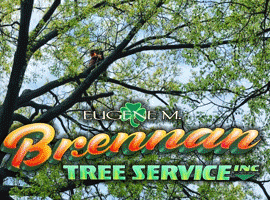A Forest Amid the Suburbs
If someone followed the directions to take the train, it's a loooooong walk to McLoone's and back.
If someone drives, they're better off just selecting one of the fine establishments in Millburn or Maplewood.
Or even South Orange. ;-)
johnlockedema said:
The Olmsted firm also designed Millburn's downtown Taylor Park.
That is interesting. I believe the plaque on Millburn Ave states the park was given to the town in the 1930's. When I go by there again, I will read to confirm or negate
jerseyjack said:
johnlockedema said:
The Olmsted firm also designed Millburn's downtown Taylor Park.
That is interesting. I believe the plaque on Millburn Ave states the park was given to the town in the 1930's. When I go by there again, I will read to confirm or negate
In this NYTimes article, towards the end, they make the Olmsted attribution. Back then the NYTimes had a fact checking department.
http://www.nytimes.com/2000/07/16/realestate/if-you-re-thinking-living-millburn-township-nj-town-where-both-halves-live-well.html?pagewanted=all&src=pm
There in another attribution within here
http://www.millburn.lib.nj.us/ebook/XX.htm
The garden's on each end have been restored to the original designs over the last few years.
Best Regards,
Ron Carter
The Secret Garden @ 377 (which sits in Orange Park)
My understanding is that the Olmsted Brothers firm (successors to their father) designed all the Essex County Parks in the early era of the County Park System. Of course, they were engaged by many other governments, institutions, and individuals even within Essex County.
I saw my first indigo buntings at the overlook at Washington Rock, and my first wild turkeys strolling along Crest Drive. I've also seen a flock of eastern bluebirds, rose breasted grosbeaks, red bellied woodpeckers, pileated woodpeckers, and red headed woodpeckers. It's a great place for birds.
jerseyjack said:
johnlockedema said:
The Olmsted firm also designed Millburn's downtown Taylor Park.
That is interesting. I believe the plaque on Millburn Ave states the park was given to the town in the 1930's. When I go by there again, I will read to confirm or negate
IIRC Taylor Park was given to the town by Mrs. John Taylor. No idea of who she was, or who designed the park.
Back to the question of cutting down trees, weeds and bushes that obscure the view from Crest Drive. There used to be three lookout points. The total view must have been 150 square miles....maybe more. Now, all we see is weeds and tree tops..
While it is nice that we are gonna have a giraffe at Turtle Back Zoo, spend some money to restore the view.
Formerlyjerseyjack said:
Back to the question of cutting down trees, weeds and bushes that obscure the view from Crest Drive. There used to be three lookout points. The total view must have been 150 square miles....maybe more. Now, all we see is weeds and tree tops..
While it is nice that we are gonna have a giraffe at Turtle Back Zoo, spend some money to restore the view.
+
kthnry said:
The article mentions the sweeping views of the New York skyline from Crest Drive. They're not so sweeping in summer, when the leaves are on the trees. Someone told me that the county used to cut back the foliage by the scenic overlooks so you could see the city, but it's not being done any more because of budget constraints. I wonder if that's something the South Mountain Conservancy would be willing and able to do, although they've been plenty busy dealing with the aftermath of the storm. Apollo T, are you out there?
I was up at there last weekend at the 9/11 Memorial lookout. At some point in the past, the trees and brush were taken down from the wall and beyond about 40-50 feet (it's just knot weed in that area which is not pretty but does not grow taller than like 6 feet) but beyond that the 'weed' trees have gotten so tall and large as to completely obscure the once sweeping view.
Should we just write/email letters to Joey D? Perhaps they are not aware.
nan said:
Can you still buy laminated trail maps at the South Orange Library?
I know you can at Maplewood Library and the same map that cost me about 4 is now reduced to about 2 because they're supposedly coming out with new maps (to show the new trails) perhaps this coming year. The map is great! I use it all the time. I too didn't discover the trails until 2010, the year my son went off to college even though I've been living in Maplewood since 1987. The trails are fantastic in every season! And check out South Mountain Conservancy, the organization responsible for maintaining trails, being proactive about the deer cull and the no damn stuff and leading hikes. A great organization. Dave Hogenauer is a treasure! And the other hike leaders are great too. Which reminds me to pay my dues to help support this organization.
Maybe if we suggest he cut the trees down and then post a sign with his face plastered on it stating "This view brought to you by Joe DiVincenzo" he'll be quicker to respond.
+5 family went for a walk on Crest Dr, the foliage was gorgeous, was also looking forward to the scenic views which weren't happening due to shrubs & immature, scrubby looking trees which could be cut down fairly easily 
kthnry said:
The article mentions the sweeping views of the New York skyline from Crest Drive. They're not so sweeping in summer, when the leaves are on the trees. Someone told me that the county used to cut back the foliage by the scenic overlooks so you could see the city, but it's not being done any more because of budget constraints. I wonder if that's something the South Mountain Conservancy would be willing and able to do, although they've been plenty busy dealing with the aftermath of the storm. Apollo T, are you out there?
Employment Wanted
Latest Jobs
Employment Wanted
-
Apr 19, 2024 at 9:42am
-
Amazing Housecleaning available call! (201) 889-5521
Apr 18, 2024 at 12:40pm
-
Apr 18, 2024 at 11:17am
-
Apr 17, 2024 at 6:35pm
-
Administrative Assistant/REMOTE-Part Time
Apr 17, 2024 at 1:19pm
Help Wanted
-
NPF509 FT Nanny/Family Assistant for Twins (ASAP Flex)
Apr 19, 2024 at 12:38pm
-
CF582 FT Nanny/Family Assistant for 2 (Late May Start)
Apr 19, 2024 at 12:18pm
-
SF5001 FT Nanny for 2 (ASAP Start)
Apr 19, 2024 at 12:02pm
-
Full-Time / Part Time Nanny Needed
Apr 19, 2024 at 11:51am
-
MF519 PT Nanny for 1 (ASAP Start)
Apr 18, 2024 at 5:23pm
Lessons/Instruction
For Sale
Garage Sales
-
Multi Family Garage Sale Sale Date: Apr 20, 2024
More info



























http://www.nytimes.com/2012/07/13/nyregion/south-mountain-reservation-in-essex-county-nj.html
A Forest Amid the Suburbs
By JULIA LAWLOR
One day recently I followed a trail leading from a parking lot at South Mountain Reservation in Essex County, N.J., and five minutes later ended up deep in a Vermont woods.
Well, not exactly. But my first foray into the interior of this 117-year-old, 2,110-acre reservation, which has been practically at my doorstep for 20 years, felt a little like being beamed up on the Starship Enterprise to another universe.
The reservation, stretching through the densely populated suburbs of Millburn, Maplewood and West Orange, consists of a river valley flanked by ridges of the Watchung chain. I’ve been familiar with some sections of the park for years: Crest Drive, a paved roadway running along the eastern edge, has sweeping views of the New York skyline, and is packed with walkers and bikers on weekends.
There are also a popular dog park, several picnic areas and on the northern end a zoo, an ice-skating rink, a restaurant, miniature golf and a zip-line course. Yet somehow I never bothered to consider what the interior might offer.
That first hike was a revelation. While minivans whiz by frantically on South Orange Avenue, a hiker scrambling across rocks above a stream on the yellow-blazed Lenape Trail has no inkling of the combustion engine’s existence. Instead there is the sound of wind in the treetops, and the insistent hammering of a pileated woodpecker.
Further exploration was required. So one sunny afternoon I enlisted Dave Hogenauer, a 78-year-old hiking guide and unofficial reservation historian, to lead me on a 2 1/2-hour hike that would take in several highlights of the reservation, which includes ponds, streams, waterfalls, the west branch of the Rahway River, scenic lookouts, a reservoir and almost 25 miles of footpaths and 27 miles of old carriage roads.
We began at the dog park, then took a quick walk through part of an enclosed 14-acre forest and wildflower preserve. Mr. Hogenauer, a retired high school history teacher, explained that the preserve was part of a larger effort to reintroduce native plants to the reservation and to restore forest undergrowth that has been decimated by a runaway deer population. Heading into the woods, we trekked downhill on a wide dirt road called Bear Lane.
The reservation, Mr. Hogenauer explained, was designed in the late 19th and early 20th centuries by the Olmsted Brothers landscape architectural firm. By 1895 Frederick Law Olmsted, one of the creators of Central Park, was suffering from dementia and had retired. Although he is said to have been given a tour of the Essex County land, the design work was left to his son, Frederick Law Olmsted Jr., and stepson, John Charles Olmsted.
They focused on replanting a variety of trees (most had been cut down to supply nearby paper mills and to heat residents’ houses) and native shrubs like rhododendrons, wild azaleas and mountain laurel. They designed a series of winding carriage roads and a number of shelters at scenic overlooks, although not all of what they envisioned was built.
Very few changes were made to the topography, according to Mr. Hogenauer. In the 1930s the Civilian Conservation Corps set up camp and put in place many of the walking trails, stone walls and footbridges.
Reaching the end of Bear Lane, we turned right and took the Overlook Trail for about 25 feet to a narrow path on the left, which led up a steep slope to a hill called Mines Point. As we neared the top, Mr. Hogenauer pointed out a piece of history dating to the early 1800s: a hole in the ground on the left side of the trail, about six feet deep and covered with dried leaves. This, he said, was one of seven “copper mines” dug by residents eager to make their fortunes, the equivalent of a modern-day trip to an Atlantic City casino.
“People would come up on Sundays on their day off and dig around,” he said. They came away empty-handed.
At this point we were on the Lenape Trail, which runs for six miles through the reservation. Mr. Hogenauer identified trees as we made our way north: red and white oaks, the ramrod-straight trunks of tulip trees, the deeply rutted barks of chestnut oaks, the ubiquitous beeches. We stopped to admire a shagbark hickory, with its uneven, overlapping layers of bark hanging off the trunk.
As we made our way along the rocky but mostly level path to Ball’s Bluff, named after a Maplewood resident, Philander Ball, who sold 3.5 acres of his land to the reservation in 1896, Mr. Hogenauer pointed out several invasive species. They included barberry and angelica, a menacing-looking tall, skinny stalk covered in thorns. “We call it the Devil’s walking stick,” he said.
In 1908 there were so few trees in the reservation that a stone-and-log shelter built on Ball’s Bluff offered a clear vista of the Orange Reservoir to the north, he said. Today the forest totally obscures any view, and only eight stone pillars remain of the original structure.
Descending from Ball’s Bluff and navigating a trail that crossed over a stream and up a short, steep incline, we reached our final destination, Hemlock Falls: a 25-foot-long cascade of water over rock cliffs that is one of the most photographed spots in the park. Since there had been very little rain, the falls provided slightly less drama than usual.
Opposite a grove of hemlock trees, a group of teenage boys tried to climb the slippery rocks without much luck. We crossed a stone footbridge and walked along a trail to view a scenic stretch of the river, passing an electric-green carpet of skunk cabbage and a grove of rhododendron bushes.
On our way back up Ball’s Bluff Road toward civilization, we encountered a felled tulip tree, its root system ripped out of the earth, and its heavy trunk blocking our path. Dead, I presumed, just waiting for its date with a chain saw.
But Mr. Hogenauer knew better. Something near the top of the tree caught his eye. As we drew closer, another universe revealed itself in a branch poking out of the trunk: a few new shoots of tiny green leaves, reaching skyward.
TAKING THE TRAIN TO THE WOODS
South Mountain Reservation, Essex County, N.J.; (973) 268-3500, essex-countynj.org; search “south mountain.”
DIRECTIONS Via mass transit, take New Jersey Transit from Pennsylvania Station to Millburn, N.J. The Locust Grove entrance to the reservation is opposite the station. Driving directions are on the park’s Web site. A trail map can be downloaded there as well; laminated maps are $5 at Maplewood Stationers (973-762-0888, maplewoodstationers.net) and Words Bookstore (973-763-9500, wordsbookstore.com) in Maplewood, N.J. Information on tours is on the South Mountain Conservancy Web site, somocon.org, under “Events.”
WHERE TO EAT McLoone’s Boathouse, 9 Cherry Lane, at Northfield Avenue, West Orange, N.J.; (862) 252-7108, mcloonesboathouse.com.